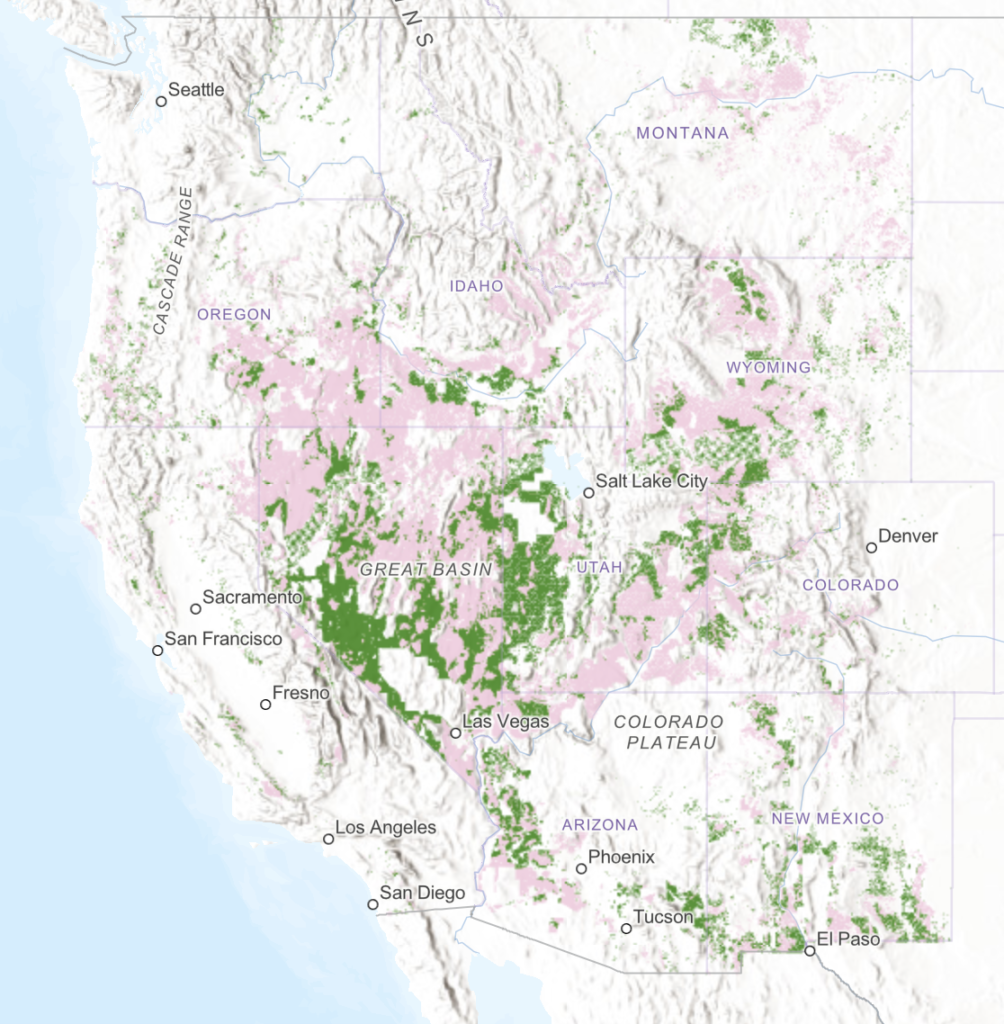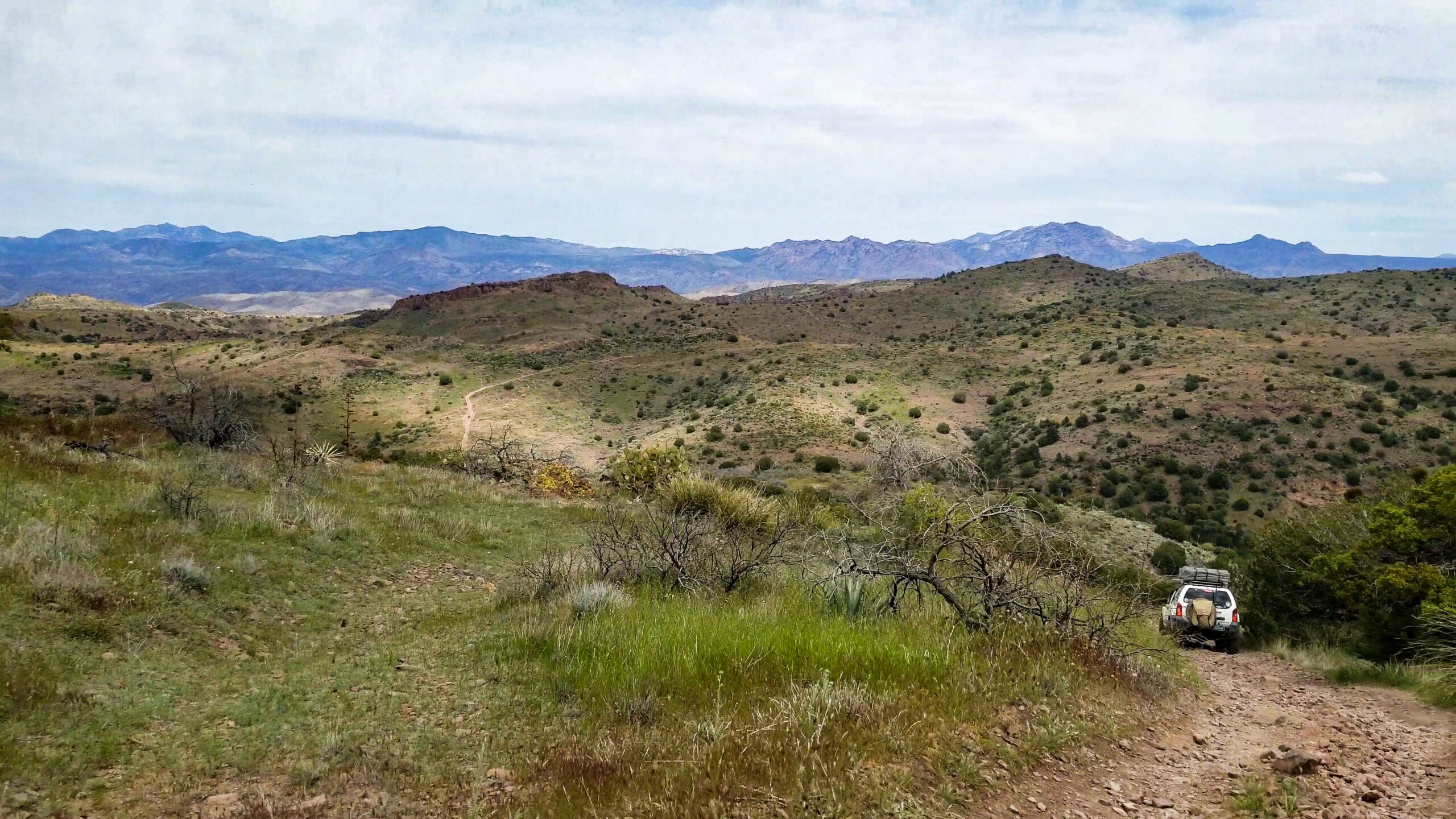Your cart is currently empty!
Posted in
There is a shift happening on public lands with two main drivers: recreation and renewable energy, solar and wind power. The climate agenda is shifting the priorities of our public lands.
There has been a significant increase of solar farms on public land in recent years. Currently, a Western Solar Plan created in 2012 that identifies public lands eligible for fast-track solar farm development in 6 of the western states; Arizona, California, Colorado, Nevada and New Mexico. With this current plan there is a variance process that potential solar projects have to go through in order to be approved for the solar project. BRC has been engaged in a number of these proposals throughout these southern states, and we often find that these developments conflict with recreation use.
The Bureau of Land Management is updating the Western Solar Plan in order to expand areas of public land suitable for solar energy development in order to meet a net carbon electricity goal by 2035. Currently the BLM is accepting public comments on the Solar Programmatic Environmental Impact Statement.
The BLM has identified 22 million acres of land as “suitable” for solar energy across 11 western states. 6 additional states have been added to the plan; Oregon, Washington, Idaho, Montana and Wyoming. Comments will be accepted on which lands should be suitable and prioritized for solar projects until April 18, 2024. If you live in one of these 6 additional states you should be asking if this land is really viable for a solar farm due to sunlight and other factors, why they are now including these states and how it will affect your favorite places to go riding. If you live or recreate in any of the 11 states, you need to add your voice to protect your recreation access.
The BLM is claiming 700,000 acres of solar projects are needed to meet the net carbon electricity emissions goals. That is roughly the size of the entire state of Rhode Island. If a project is within the 22 million acre Western Solar Plan it will then be eligible for a streamlined permitting process rather than the current variance requirements through the National Environmental Policy Act (NEPA). The BLM wants to fast track solar farms on public lands.
Alternatives
Alternative 1: only creates exclusion areas and non-exclusion areas
Alternatives 2-5 have a 10% slope exclusion which means solar projects will not be fast tracked if they are proposed on hills of 10% slope or more which is sensible.
Alternative 2: Alternative 2 creates exclusion areas and has the 10% slope exclusions.
Preferred Alternative, Alternative 3: Priority will be given to areas within ten miles of transmission lines, planned transmission lines or areas previously “disturbed”. The BLM’s preferred alternative identifies “priority areas” that will be near transmission lines. Projects can be proposed outside of these areas within the Western Solar Plan however they would not qualify for the fast tracked process to amend land management plans.
Alternative 4: prioritizes projects on “previously disturbed lands.
Alternative 5: prioritizes previously disturbed lands and they would need to be close to transmission lines.
The maps below show the alternatives proposed:
green=BLM lands available for application
light pink=excluded from consideration
pink=excluded because not within transmission lines or disturbed areas
blue=priority areas
light blue=BLM lands available for application with variance process
Alternative 1
Alternative 2
Alternative 3 (preferred alternative)
Alternative 4
Alternative 5
Current Plan
Areas excluded from the Western Solar Plan
ACEC’s, areas with wilderness characteristics, Wilderness, NCA’s, SRMA, habitat and wildlife protection areas, National recreation trails, old growth forests, tribal interests, sensitive areas. Your favorite places to ride need to also be within these exclusion areas.
The 2012 Western Solar Plan has a more extensive and complete list of exclusion areas. However, if the 2012 plan is any indication of where solar energy will be prioritized it will be in areas with access and recreation. There are dozens of exclusion areas that protect environmental interests whereas special recreation management areas give the only possible protection for recreation areas. The entire purpose of the Western Solar Plan is for environmental interests in order to create green energy however these interests aren’t willing to give up any of their management priorities in order to make it a possibility. It is stated that OHV use can be closed as a result of these projects.
Lands that are designated as Wilderness and national parks won’t be considered. The image below provided by Arizona Backcountry Explorers depicts land in the Western United States currently protected for biodiversity. Dark green depicts Wilderness, Wildlife refuges and national parks. Solar farms will be located in the light green areas with priority given to areas with transmission lines.
It is important to understand that all alternatives given provide more land available than is what is actually needed to meet the net carbon electricity goals. This plan just identifies lands that could be fast tracked. However if a plan is approved outside of the “green areas” it is expected to see litigation over those proposals.
The new proposal allows development in an area up to 10% slope where the current plan caps the slope percentage at 5%. The new plan will also remove any solar intensity requirement which the solar intensity is much higher in the original 6 lower states than the additional 5 states.
In the end of 2023 the BLM also started the process to modify (revising, deleting, or adding to) seven designated Section 368 energy corridors (also known as West-wide Energy Corridors). Just recently the BLM started the process to update the West-Wide Energy Corridors plan. These corridors are where transmission lines will be prioritized and allowed.
Section 368 Energy Corridors: In 2009 there were legal challenges to the 2005 Energy Policy Act in which section 368 energy corridors were created. The BLM is proposing to update 7 energy corridors which will affect 19 resource management plans in 7 different states across public lands.
“The RODs approving amendments to 92 BLM resource management plans (RMPs) to designate approximately 5,000 miles of Section 368 energy corridors on BLM-administered lands in Arizona, California, Colorado, Idaho, Montana, Nevada, New Mexico, Oregon, Utah, Washington, and Wyoming.” This is clearly setting the stage for expanding areas prioritized for solar energy on our public lands. There has also been an increase of proposals for solar projects and transmission lines within the original 6 states.
You can attend a future public meeting:
Virtual Meeting: March 6, 11:00 am – Mountain TimePre-registration is required at this link
Tags:
You may also like…

Visit the AZBackroads.com Store

Please Become A Member
We need your help to keep our backroads open. Please join today!








